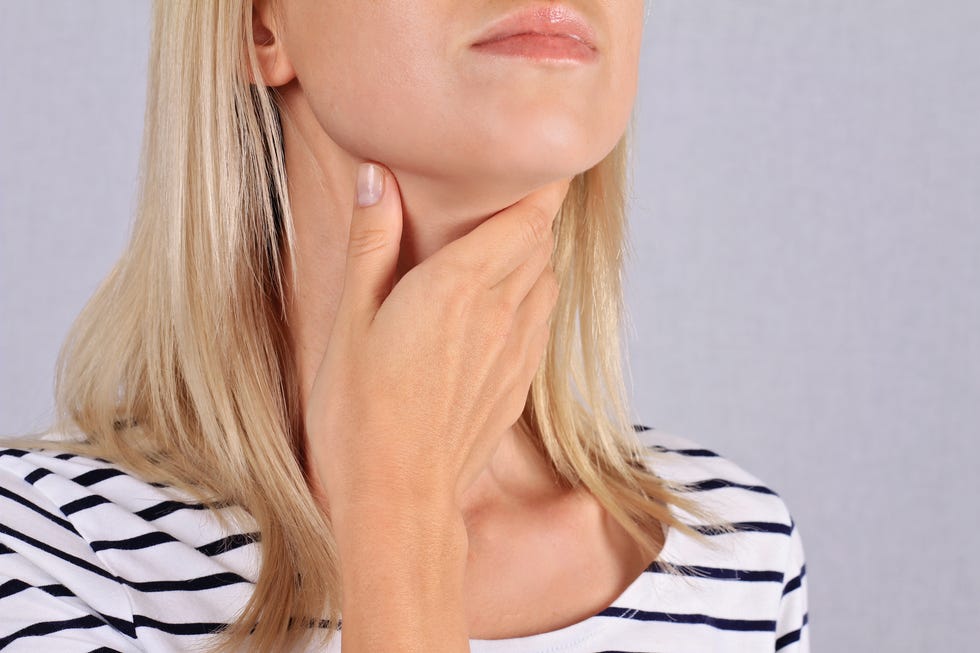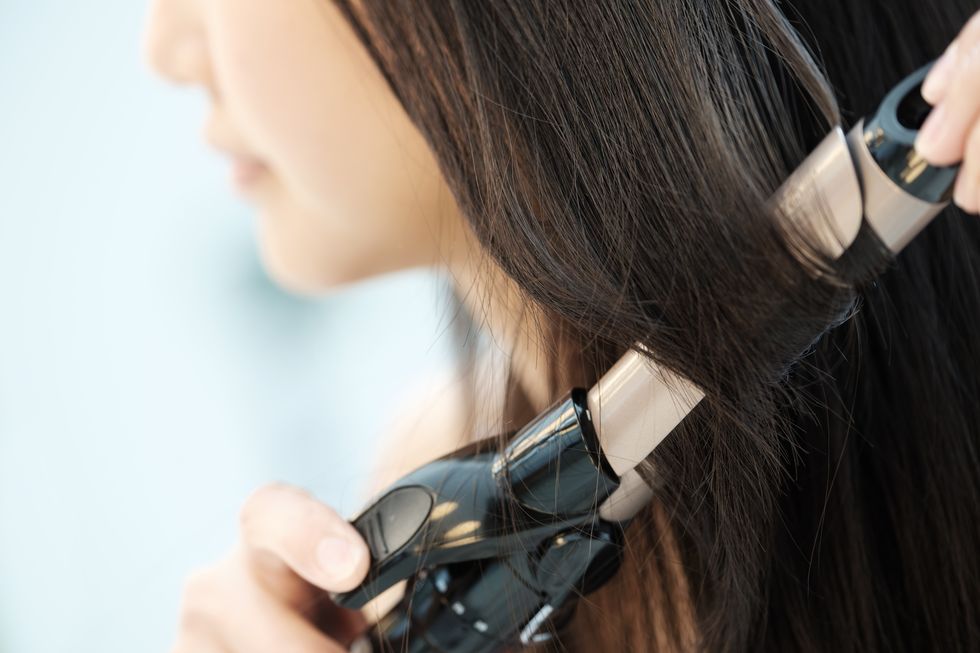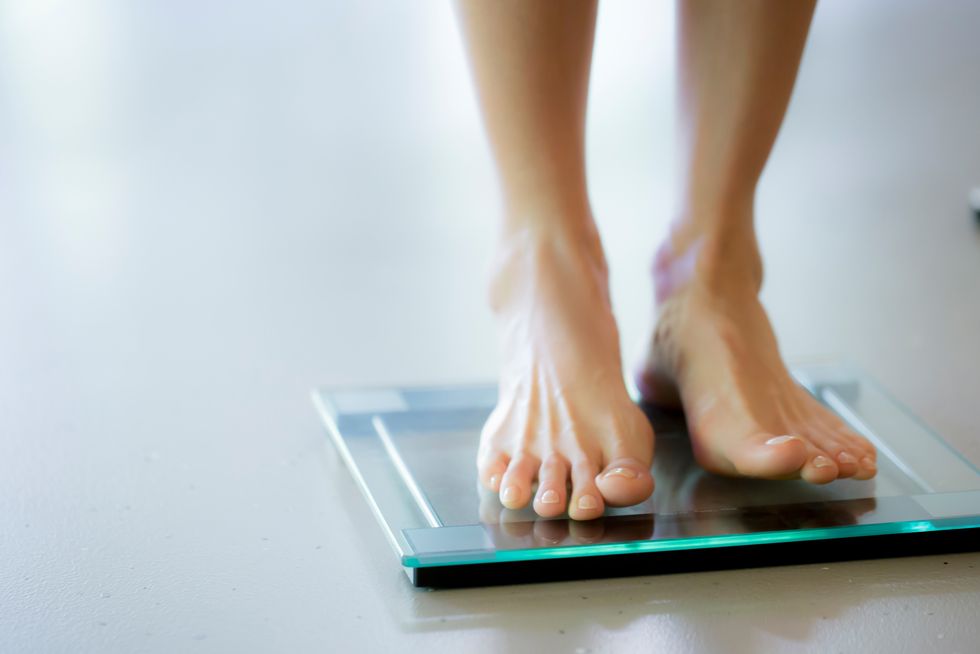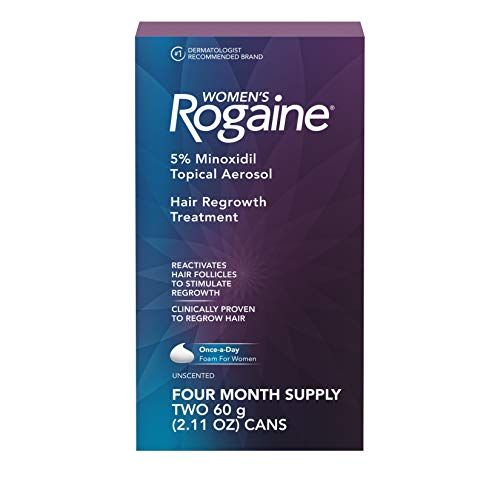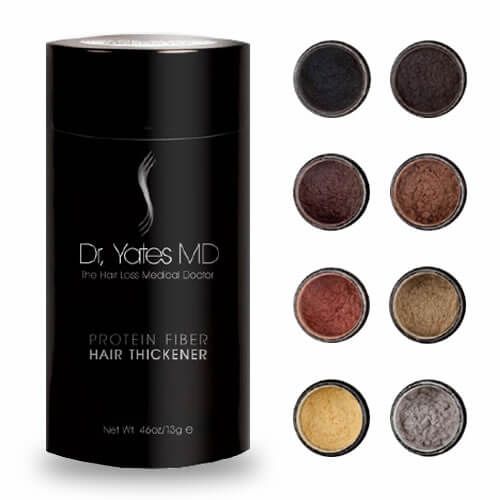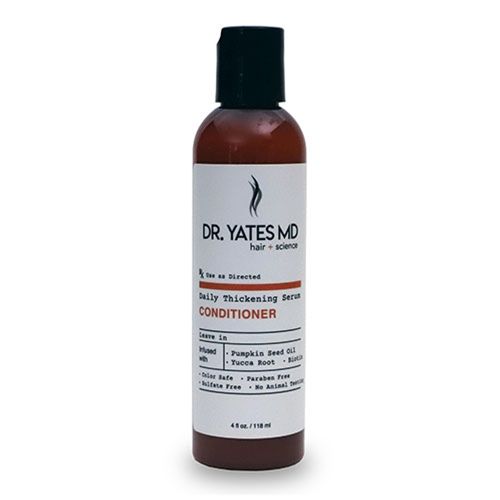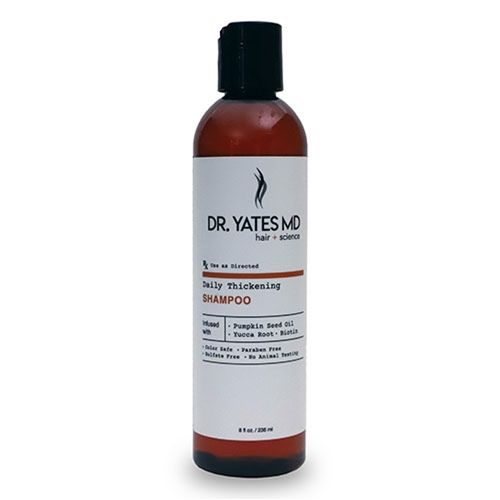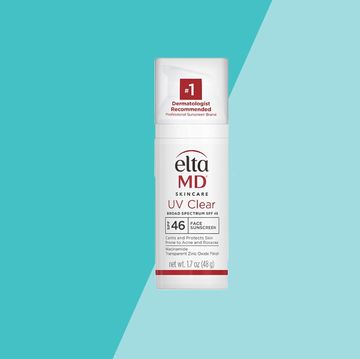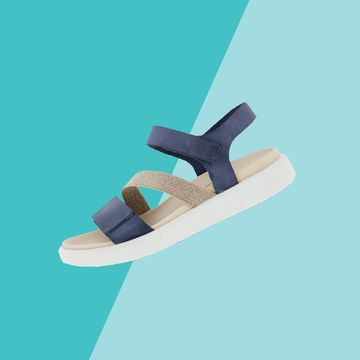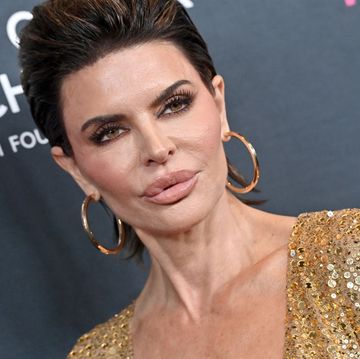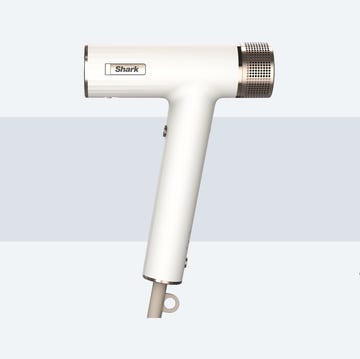Everyone loses hair from time to time. It could happen during your morning shower, while you’re blowing it dry, or when you give it a quick brush—and that’s totally normal. But when you start to notice an excessive amount of hair thinning, bald patches, or your hairline starts to recede in places it didn’t before, you may start to wonder what’s up.
“On average, we lose 50 to 100 hairs a day,” says Francesca Fusco, M.D., a New York City-based board-certified dermatologist who specializes in hair loss. “That’s just hair going through its cycles, and there will be a new one to replace it.”
Don’t assume you’re the only one going through this. “Hair loss is extremely common in women. In fact, it’s getting more and more common,” says Gary Goldenberg, M.D., assistant clinical professor of dermatology at the Icahn School of Medicine at Mount Sinai in New York City.
Beyond the physical aspect, it can take a toll on a person emotionally—especially for women, according to a 2015 review of research. Because hair is so closely identified with femininity, it can impact your self-esteem, make you feel depressed, and get in the way of your relationships with other people.
But to fight it, you need to know why your hair is falling out in the first place. Here, dermatologists and other specialists explain why you're losing more hair than usual—and the best treatments for hair loss to restore its volume and shine.
What Causes Hair Thinning?
1. Telogen effluvium
Telogen effluvium is a temporary condition that can occur after pregnancy, major surgery, drastic weight loss, an illness (yes, including COVID-19 hair loss), or extreme stress, in which you shed large amounts of hair every day, usually when shampooing, styling, or brushing. During telogen effluvium, hair shifts faster than usual from its growing phase into the “resting” phase before moving quickly into the shedding (or telogen) phase. “High-stress environments prevent the body from giving hair the TLC that it needs, causing hair to shed and fall out,” Dr. Goldenberg says.
Women with telogen effluvium typically notice hair loss six weeks to three months after a stressful event. At its peak, you may lose handfuls of hair. “It can be very distressing,” Dr. Goldenberg says. Your doc can diagnose this condition by looking for small “club-shaped” bulbs on the fallen hair’s roots. This means the hair has gone through a complete cycle of growth, suggesting that the cycle may have sped up due to stress.
2. Hereditary hair loss
Genetic hair loss or thinning is known as androgenetic alopecia and is the most common cause of hair loss, according to the American Academy of Dermatology (AAD). The gene can be inherited from either your mother’s or father’s side of the family, though you’re more likely to have it if both of your parents had hair loss.
Women are often protected from genetic balding because the low testosterone levels and higher estrogen in their bodies can protect hair, explains William Rassman, M.D., renowned hair growth specialist and medical advisor at Happy Head. However, this can change during menopause (more on that later) and some women with strong family histories of hair thinning or balding may still experience this.
The condition develops slowly and may start as early as your 20s, and women with this trait tend to develop thinning at the hairline behind the bangs, says Pamela Jakubowicz, M.D., a board-certified dermatologist at Montefiore Medical Center in New York City. Another red flag is a widening part, and the hair loss may be diffused, meaning it’s spread across the entire scalp. Your derm can examine the pattern of hair loss and perform blood work to rule out other causes, says Dr. Jakubowicz.
3. Alopecia areata
Alopecia areata is an autoimmune disease in which the immune system attacks hair follicles. It may affect up to nearly 7 million people in the United States and occurs in all genders, ages, and ethnicities. The cause is unknown, but it may be triggered by stress or illness, Dr. Goldenberg says. This is diagnosed by observing the pattern of hair loss or blood tests.
The condition can occur in three forms. Alopecia areata commonly causes round, smooth patches of baldness on the scalp, eyebrows, or legs, Dr. Fusco says. Total hair loss on the head is known as alopecia totalis, while hair loss that occurs all over the body is called alopecia universalis. “Some patients have reported that before the bald spot occurred, they felt something in that area—a tingling or an irritation,” Dr. Fusco says.
4. Traction alopecia
Traction alopecia is a form of hair loss that happens as the result of tight or heavy hairstyles, according to the AAD. It “forcefully pulls hairs out of the scalp. This causes inflammation in the hair follicle that ultimately leads to scarring and destruction of the hair follicle,” says Oma N. Agbai, M.D., assistant clinical professor of dermatology at the University of California, Davis School of Medicine.
“It’s very commonly seen in people of African descent that wear tight hairstyles like braids, weaves, and even dreadlocks,” says board-certified dermatologist Ife J. Rodney, M.D., founding director of Eternal Dermatology + Aesthetics in Fulton, MD. “Braids and weaves put direction tension on the scalp and hair follicles. With dreadlocks, even if they’re not done tightly, the weight of them can create tension.”
However, Dr. Rodney says, anyone can experience traction alopecia. “I see a lot of military women that have to wear their hair in tight buns and have traction alopecia,” she says. “Ballet dancers can get it, too.”
This may appear as scaling and flaking along the hairline, along with what appears to be small bumps around the hair follicle, Dr. Rodney says, which are the result of inflammation around the hairline. There can also be scalp tenderness. If caught early enough, the hair should grow back, Dr. Rodney says. But if it continues for years, “the hairs won’t grow back.” A doctor's examination or biopsy can help differentiate this from other types of alopecia, Dr. Agbai says.
5. Medication side effects
Certain medications, like some cholesterol-lowering drugs, blood pressure drugs, warfarin (an anticoagulant), psoriasis medications, anti-seizure medication, and anti-arrhythmia drugs all have hair loss as a potential side effect, says women’s health expert Jennifer Wider, M.D. If you notice you are starting to lose your hair three months or so after beginning a new medication, talk to your doctor about what your options are.
6. Thyroid problems
Thyroid problems are common in women, especially over the age of 50, says Los Angeles-based endocrinologist Theodore C. Friedman, M.D., M.P.H. In fact, one in eight women will develop a thyroid disorder in her lifetime, according to the American Thyroid Association.
Your thyroid—the small, butterfly-shaped gland that sits at the base of your neck—is responsible for producing thyroid hormone, which is responsible for everything from your basal metabolic rate—the rate at which your body uses oxygen and energy to function—to the growth of your hair, skin, and nails.
But when you don’t have the right amount, you may notice changes in bodily functions. When too little is pumped out, you are said to have hypothyroidism, or an underactive thyroid. If your body makes too much of the hormone, you’re said to have hyperthyroidism, or an overactive thyroid.
In addition to hair loss, hypothyroidism (too little hormone) may cause a host of symptoms, including unexplained weight gain, fatigue, constipation, depression, and difficulty concentrating.
Hair, nails, and skin may become more brittle and break more easily. Hyperthyroidism (too much hormone) is less common than hypothyroidism but may cause inexplicable weight loss, heart palpitations, nervousness, irritability, diarrhea, moist skin, and muscle weakness. Both much or too little thyroid hormone can affect your hair follicles, resulting in hair loss.
This can be tested for with a blood test that measures thyroid-stimulating hormone (TSH), which is produced by the pituitary gland in an attempt to coax the thyroid to make thyroid hormone. Excess TSH usually indicates hypothyroidism, while abnormally low levels suggest hyperthyroidism.
7. Iron deficiency anemia
An iron deficiency seems like an unusual reason for hair loss, but women can “absolutely” have hair loss while struggling with this, Dr. Goldberg says. Women who have heavy periods or don’t eat enough iron-rich foods may be prone to iron deficiency, in which your body doesn’t create enough hemoglobin, a protein that transports oxygen to the tissues in your body. In turn, your red blood cell count drops quickly, zapping your energy. About 10 million people in the United States are iron deficient, per one 2013 review of research, and it’s more common in women than men.
Iron deficiency anemia causes extreme fatigue, weakness, and pale skin. You may have difficulty concentrating and also notice headaches, or cold hands and feet. Any type of exertion may leave you short of breath. Your hair may also start to thin and fall out, Dr. Goldenberg says. A doctor can perform a blood test to determine if you have iron-deficiency anemia and do a red blood cell count.
8. Polycystic ovary syndrome
As many as five million women in the United States suffer from polycystic ovary syndrome (PCOS). The condition, which can begin as early as age 11, is caused by a hormonal imbalance in which the ovaries produce too many male hormones. PCOS often causes infertility.
PCOS can cause facial hair growth, irregular periods, acne, and cysts on the ovaries. And while you may experience hair loss on your scalp, you may notice more hair elsewhere on the body, Dr. Fusco says. A doctor can take a blood test to look for elevated levels of testosterone and DHEAS (dehydroepiandrosterone), a product of testosterone.
9. Psoriasis, dandruff, and other skin conditions of the scalp
An unhealthy scalp can cause inflammation, and “if the inflammation is deep in the scalp, it can cause hair loss,” Dr. Goldenberg says. Skin conditions that lead to hair loss include seborrheic dermatitis (dandruff), psoriasis, and fungal infections such as ringworm.
Seborrheic dermatitis causes the scalp to shed its skin, so you’ll notice greasy, yellowish scales on your shoulders or in your hair. It may be the result of yeast called Malassezia, hormonal changes, or excess oil in the skin. Scalp psoriasis, an autoimmune condition that causes excessive skin cell turnover, produces a very thick white scale that can bleed if pulled off.
With ringworm, a fungus you contract by touching an infected person or animal, you’ll notice red patches on your scalp, which may be diffused, Dr. Jakubowicz says. A physical examination can determine which specific condition you have.
10. Excessive styling
Too much shampooing, styling, and dyeing can harm your hair, leading to hair breakage and loss, Dr. Goldenberg says. Often, it’s a combination of treatments—keratin, coloring, and blow-drying, for instance—that does the damage.
If the fallout is occurring from external damage caused by styling, it will simply break, and you won’t see those club-shaped telogen bulbs at the ends.
Dr. Jakubowicz does a pull test: She takes a small handful of about 50 strands, pulls gently, and checks to see whether the hair that comes out has bulbs on the ends.
11. A low-protein diet
While it’s rare for people living in developed countries to have a protein deficiency, if you’ve recently become a vegan or vegetarian and haven’t worked enough plant-based proteins into your diet, it’s possible you may not be getting enough of the nutrient.
When this happens your body may ration whatever protein is already in your body by shutting down hair growth, according to the AAD. This typically occurs two to three months after your protein intake dips.
In addition to hair loss, a protein deficiency may cause bloating, brittle nails, fatigue, and weakness. When your hair breaks, you won’t see those club-shaped telogen bulbs at the ends. Your doctor can test for your total protein through a blood test that measures the protein in your blood.
12. Menopause
Menopause is a normal condition that affects women as they age. By definition, menopause is a point in time 12 months after a woman’s last period, per the National Institute on Aging (NIA). During this time, your body produces less estrogen and progesterone hormones. When women go through menopause, they lose the hair protection estrogen once offered, Dr. Rassman says. When the relationship between estrogen and testosterone changes, a condition called age-related hair thinning can occur. This happens in mostly post-menopausal women, but some men can experience it as well if their hormone levels change with age.
Everyone experiences different menopause symptoms, but you may notice symptoms like hot flashes, trouble sleeping, moodiness, irritability, pain during sex, and depression, the NIA says. Hair loss can also be an issue. “During menopause, hair loss occurs because of the changes in hormones,” says Dr. Wider. “When estrogen and progesterone drop, the result is a slow down of hair growth and a thinning of hair in many women.”
Your doctor may suggest a blood test to check your follicle-stimulating hormone and estradiol levels to rule out any other causes for the changes you’re going through, the NIA says.
13. Dramatic weight loss
“Studies have shown that rapid or significant weight loss can trigger hair loss,” Dr. Wider explains, commonly due to the deprivation of certain nutrients, including protein.
You’ll notice if you start to lose weight quickly (typically defined as losing more than 5 percent of your weight in six months to a year). Your pants will be looser and, if you weigh yourself regularly, you’ll see the number on the scale go down. If you’re experiencing hair loss, it can come on suddenly.
If you’re not trying to lose weight, your doctor may recommend blood tests to see what’s behind your rapid weight loss—which may include things like simply not eating enough, thyroid issues, celiac disease, or even mental health disorders like depression.
14. Lupus
Lupus is a chronic autoimmune disease in which the body’s immune system attacks its healthy tissues. The condition affects about 1.5 million Americans, according to the Lupus Foundation of America, and tends to strike women during their childbearing years.
Lupus often causes extreme fatigue, headaches, oral ulcers, and painful, swollen joints. Many people develop a butterfly-shaped rash across the bridge of the nose and become more sensitive to the sun. Other symptoms include fever, swelling in the feet and hands and around the eyes, chest pain, and anemia.
Many people with lupus also experience hair loss, which may be mild and occur while shampooing or brushing your hair—or it may be more severe, coming out in patches and accompanied by a rash on the scalp, says Arthur Weinstein, M.D., director of the division of rheumatology at the Washington Hospital Center. Because these symptoms occur in many other conditions, lupus is often called the great imitator.
To test for lupus, a rheumatologist will examine joints and other tissues for signs of inflammation, such as heat, pain, swelling, and redness. A blood test to measure levels of anti-nuclear antibodies (ANA) may also indicate lupus. Rheumatologists will also determine if patients have four of 11 diagnostic criteria set by the American College of Rheumatology, though fewer criteria along with a skin biopsy may sometimes indicate lupus, Dr. Weinstein says.
15. Chemotherapy
Chemotherapy works to kill cancer cells in your body, but it can also kill off healthy cells in the process, including ones behind hair growth. “Chemotherapeutic agents target rapidly growing cells (like cancer) in order to stop the growth,” Dr. Wider says. “Unfortunately, they also target healthy cells like hair cells and, as a result, a person in chemotherapy can lose their hair.”
You may notice thinning hair and/or hair that falls out in clumps. This is a very common sign of chemotherapy, so a test is likely unnecessary to diagnose this. You can speak to your doctor about treatment options that work without your chemotherapy program.
16. Vitamin D Deficiency
You often hear about vitamin D deficiencies in the winter months, especially in darker climates, because the vitamin mostly comes from sun exposure. But a lack of vitamin D can actually cause some hair loss and has been linked to genetic hair loss and alopecia areata, says Lindsey Yeh, M.D., board-certified medical and cosmetic dermatologist. The good news is that it’s reversible when levels get back to normal, explains William Yates, M.D., FACS., a hair transplant surgeon.
Hair Thinning Treatments
See your dermatologist
The most effective thing to do if you notice proline and unexplained hair loss is to set an appointment with your dermatologist, Dr. Rodney says. They can then assess your hair, medical history, and any additional test to determine the source of the problem and create a treatment plan that works for you.
Minoxidil
Minoxidil (aka Rogaine) is the only FDA-approved ingredient found to improve hair loss. It works by enhancing the size of the follicles, resulting in bigger strands of hair. The over-the-counter solution is applied to the scalp and slow loss and regrow hair, Dr. Yates says. (Just note that women should not use minoxidil if they are pregnant or nursing.)
Finasteride
Also called Propecia, this oral medication is a very common drug prescribed for hair loss that blocks the hormone causing hair loss, Dr. Yates says. Dr. Rassman warns that this drug is not for use in pre-menopausal women, because it is well known to cause issues during pregnancy.
Kerafactor
Kerafactor is a relatively new treatment uses seven concentrated bio-identical growth factors and proteins, which paired with laser therapy, can be a great option for someone suffering hair loss, Dr. Rodney says.
Platelet Rich Plasma Injections
This procedure is when your blood is drawn and then placed into a machine to separate the red blood cells from plasma. This plasma—which is “rich in platelets that contain growth factors,” per the AAD—is then injected into the hair follicles directly.
Steroid Injections
Dr. Rodney says corticosteroid injections may help reduce inflammation in some cases which can sometimes improve hair growth.
Stress Management
In the case of conditions like telogen effluvium that are linked to stress levels, it’s best to incorporate simple ways to relieve stress.
Supplement
Taking a hair growth vitamin or supplement—such as biotin or other forms of vitamin B—may also be helpful, says Dr. Goldenberg. “I also recommend a multivitamin with biotin, zinc, and copper,” he adds. Just check in with your doctor first to make it won’t interfere with any other medications you may be taking. Dr. Rassman adds that your doctor can do a full blood panel to help target exactly what vitamins and minerals your body may need more of, like iron or vitamin D.
Dr. Rodney is also a big fan of using Nutrafol supplements, which use a unique blend of key vitamins and minerals like A,C,D, iodine, and zinc with ashwagandha and saw palmetto, she says. Chesahna Kindred, M.D., M.B.A., FAAD, board-certified dermatologist agrees, adding that Nutrafol supplements target the root cause of hair loss when it comes to stress, lifestyle, and nutrition and can regrow hair in three to six months.
Hair Thickening Products
It may not solve all of your hair woes, but Dr. Yates recommends his line of hair thickening products that work well to improve the appearance of hair thickness. He recommends the Keratin Fiber Hair Enhancer, Thickening Serum, and Thickening Shampoo. Additionally, Dr. Rodney says ISDIN Lambdapill has a shampoo and lotion that contain zinc, biotin, and anti-inflammatory ingredients like Panax ginseng which help regrow and strengthen hair follicles.
Hair Transplants
Most common in men, hair can be transplanted from other parts of the body to create a fuller look on the scalp. This is not an option for autoimmune diseases or some age-related hair loss, Dr. Rassman says.
Change your hairstyle
If the hair loss is due to how you wear your hair, your doctor may suggest you change your hairstyle to something less tight. “Wear your hair down and around your face,” Dr. Rodney says. “If you have braids, you have to ask your hairstylist to make them loose. If you have dreadlocks, you’ll want to keep them on the shorter side so they’re not too heavy on the scalp.” She also recommends loosening your buns or ponytails if you pull your hair back that way.
Additionally, avoid using appliances that overheat your hair. Set your hairdryer on cool and low settings and minimize your use of flat and curling irons (say, for special occasions). If you use hair gel or hair spray, don’t wait for it to dry before you comb through it, because the hair will harden and be more likely to break.
If you must dye your hair, consider pivoting just one or two shades from its normal color: The more severe the color change, the more chemicals you require—resulting in excess breakage.

Arielle Weg is the associate editor at Prevention and loves to share her favorite wellness and nutrition obsessions. She previously managed content at The Vitamin Shoppe, and her work has also appeared in Women’s Health, Men’s Health, Cooking Light, MyRecipes, and more. You can usually find her taking an online workout class or making a mess in the kitchen, creating something delicious she found in her cookbook collection or saved on Instagram.


